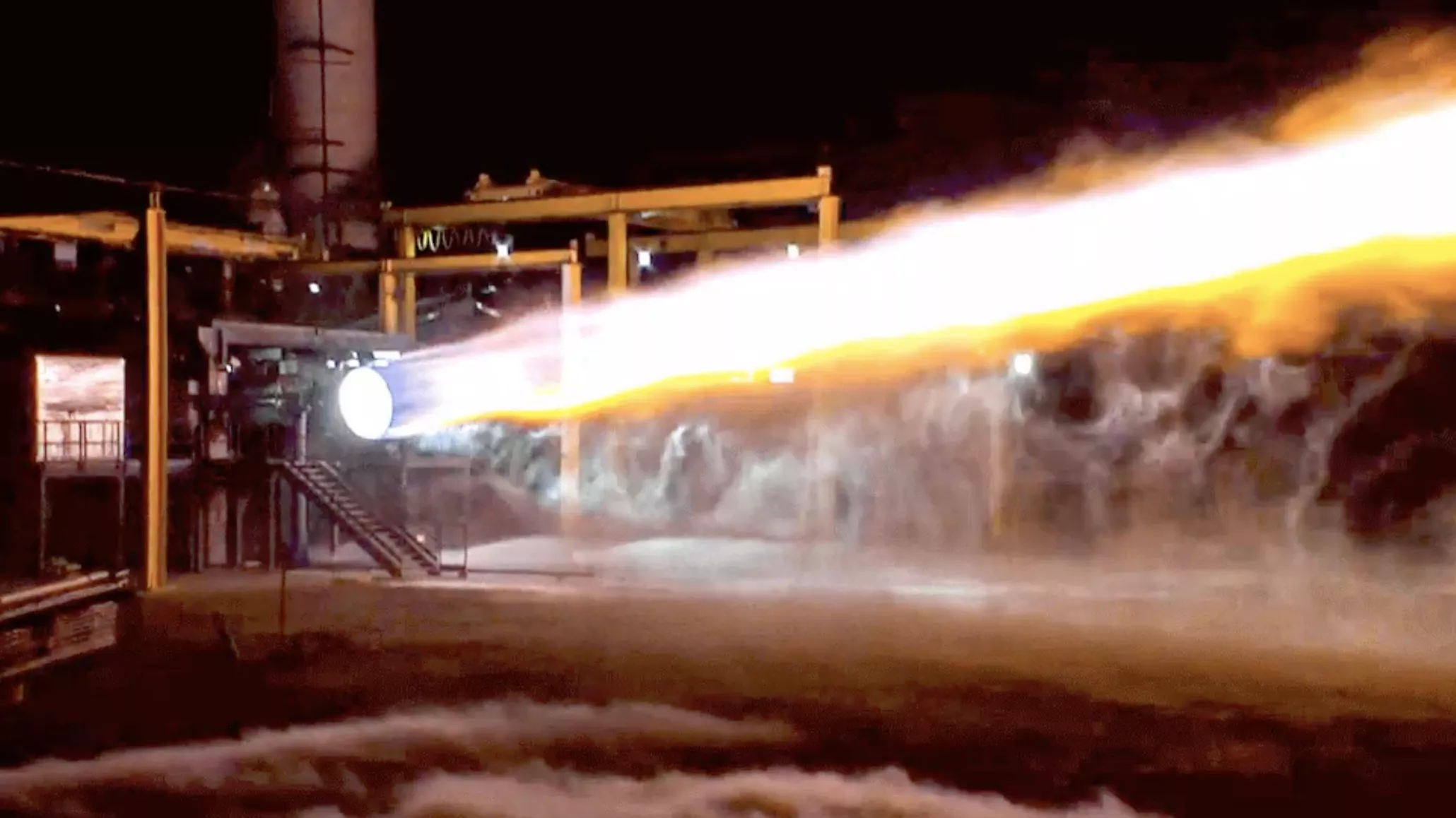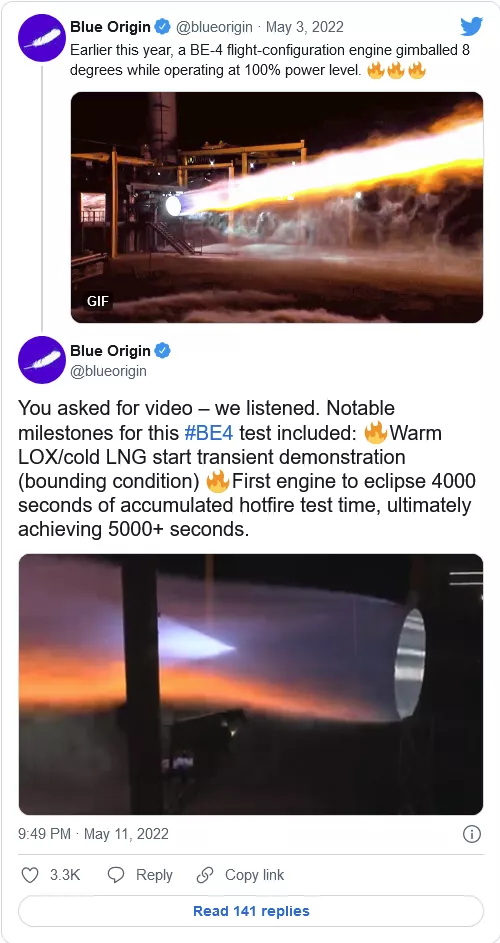Retail billionaire Jeff Bezos's aerospace company Blue origin has successfully tested the largest rocket engine in the United States Blue origin, Elon Musk's space exploration technology company (SpaceX) and the joint launch Alliance (ULA) are developing the next generation of heavy rockets and spacecraft to launch a new round of space competition with each other. Together with NASA's space launch system (SLS), they form the backbone of the agency's Artemis program to develop and maintain human existence on the moon.

Now, the blue origin be-4 engine has completed its full-length test and is ready to put the lander on the lunar surface later this year.
Blue origin shared a test video on its social media account showing the full launch of the company's be-4 rocket engine. Be-4 is a staged combustion rocket engine fueled by liquid natural gas. Unlike other competitors, this rocket has been in painful delay, which has damaged not only the reputation of blue origin, but also the business of ula, which plans to use be-4 for its next generation Vulcan Centaur rocket. If the be-4 engine is delivered to ula, Centaur will launch the astrobotic lunar lander later this year.
The be-4 is also the largest rocket engine in the United States. The specifications of the Centaur spacecraft released by Ula outline that the be-4 will be able to generate 550000 pound feet (LBF) of thrust. On the other hand, according to details disclosed by Elon Musk, CEO of SpaceX, their Raptor 2 has successfully generated 530000 pound feet of thrust during the test.
In addition to be-4 and Raptor 2, Aerojet Rocketdyne rs-25 is the third engine competing for the current generation of rocket power in the United States. The rs-25 is also the oldest engine in the trio because it was responsible for powering it into orbit before the end of the shuttle program. In the space shuttle era, the engine was upgraded to run at 109% of its original thrust and produce thrust of up to 420000 pounds, even up to 111% in case of emergency.

Blue origin's video shows that the be-4 ran more than a minute of testing in a key demonstration, reflecting the actual time required for the engine to launch centaur or new Glen into orbit. The new Glen is a heavy rocket of blue origin, which will compete with the next generation launch vehicle system of Centaur and SpaceX starships.
However, although its engine is larger than Raptor 2, the new Glen will be a smaller rocket than SpaceX's rocket. This is because SpaceX will use its experience on Falcon 9 to use up to 30 engines on the new rocket and enable it to launch 100 tons into low earth orbit (LEO). In contrast, the new Glen and Vulcan Centaur are designed to lift 45000 kg and 27200 kg to low earth orbit, respectively.
SpaceX has also been busy testing Raptor 2 since last December, and most of its tests have been successful. Unlike blue origin, which keeps its tests strictly confidential, SpaceX is used to testing its engines in public. This enabled photographers to record the company's progress, although the process produced many spectacular fireworks and famous scenes of in-situ explosions.
Finally, although be-4 is currently the most powerful rocket engine in the United States, it is dwarfed by Aerojet's F1 engine for Saturn V rocket, which once brought astronauts to the moon. F1 produced a thrust of up to 1.6 million pounds when taking off, which is still the limit that a single combustion chamber rocket can reach. In addition, both use liquid as fuel. If we remove this restriction, the solid rocket booster designed by orbital ATK for SLS is the most powerful American engine, because it can produce 3.3 million pounds of thrust. The capabilities of these rocket companies are really dazzling.